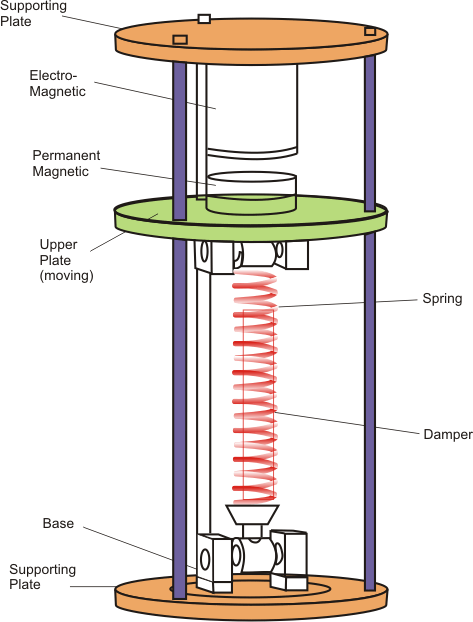Vibration Isolation
using AVC
- Another traditional application of AVC is in the field of Vibration Isolation. In typical cases like vibration isolation of noisy machines - particularly in the low frequency range - could not be achieved by traditional isolators as the mass of the isolators will be prohibitively high.
- AVC is of good use in such application as new actuators like Lead-Zirconate-Titanate based PZT actuators have high band-width.
- Figure 22.3 shows the concept of an active suspension system.

Figure 22.4: Concept of Smart Suspension System
Highlights of the system
- The excitation is applied in the bottom most plate simulating a typical vehicle excitation on a road.
- The middle plate represents the chassis and is supported on a traditional spring-damper system (connected in parallel).
- The active suspension is achieved due to the interaction between two magnets – a permanent magnet located on the top of the middle plate and an electromagnet situated on top of the permanent magnet at a distance ‘x' away with the help of a top supporting plate.
- It can be shown that the electromagnetic force effective on the middle plate varies proportionately with the control current in the E-M actuator and is quite effective at a small distance (about 10-15mm).
- Using a control current of about 600 mA and a phase-lead controller it is shown one can drop down the vibration amplitude from 20mm to 2mm in a frequency range of 2-30Hz.
|
|
|